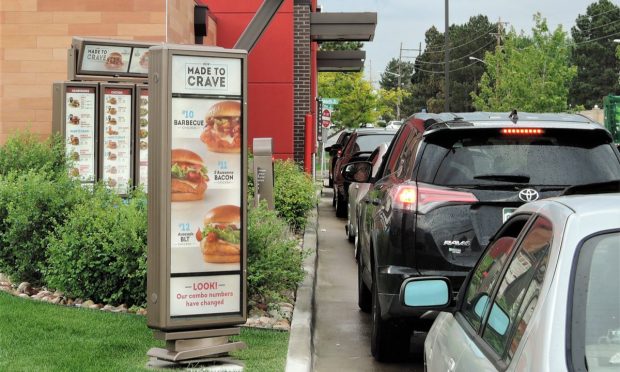Fast Food Restaurants Feel the Heat as Gas Prices Hit $5

Gas prices are breaking new records, with multiple sources revealing that about $5 per gallon is becoming the national average.
AAA reported Friday (June 10) that the national average is $4.99, and gas price-tracking app GasBuddy announced Thursday (June 9) that the average price per gallon “has officially surpassed” $5, marking the highest price on record.
For restaurants, these soaring costs are raising the stakes of already pressing drive-thru challenges. The ordering channel has become more popular since March 2020, and this rise in demand has coincided with labor challenges making it more difficult for restaurants to fulfill orders, leaving many drive-thru customers waiting for long periods of time. These elevated wait times leave consumers frustrated and risk alienating them completely.
Now, as idling in line at the drive-thru comes to cost more than many consumers are able or willing to spend, restaurants must work even harder to increase throughput. Research from “New Reality Check: The Paycheck-to-Paycheck Report – The High Earners Edition,” a PYMNTS and LendingClub collaboration, found that in April, 61% of consumers reported living paycheck to paycheck, with 35% of those consumers doing so with difficulty.
Read more: 36% of Consumers Earning $250K+ Now Live Paycheck-to-Paycheck
“When someone pulls in, they want to be in and out very quickly,” Dwayne Chambers, chief marketing officer at Checkers & Rally’s Drive-In Restaurants, said in an interview with PYMNTS. “They don’t want to sit; they don’t want to idle. Literally, as gas prices go up, that time is money when they’re driving, and so I think you’re going to see a lot more people ordering ahead, where they don’t even have to stop at the drive-thru … It’s already paid for. It’s done. And they’re going to whip through, at least at our place. It may be different at some of the other restaurants.”
See more: Checkers & Rally’s CMO Says Rising Fuel Costs Demand Greater Drive-Thru Efficiency
Some restaurants are leveraging automation to boost efficiency, taking orders via conversational artificial intelligence (AI) so that employees can focus on preparing meals and getting them into customers’ hands. Others are streamlining menus to simplify the process in the kitchen, boosting the number of orders the staff can fulfill and reducing the amount of time consumers spend deliberating in front of the menu.
Read more: Quick-Service Restaurants Aim to Bring the ‘Quick’ Back to the Drive-Thru
Taco Bell, for its part, has just opened a new format meant to maximize drive-thru capacity and minimize wait times, placing the kitchen on a second level above drive-thru lanes and sending customers’ orders down in a vertical lift (basically a small elevator for food).
“We believe what the new drive will become in the future … is a technology-reliant operating system that merges both the order and the pickup point into one, which creates less waits for consumers, creates an opportunity to go in places where we didn’t think we could get into and … creates the potential for the perfect drive thru experience,” Taco Bell Vice President and Chief Operating Officer Mike Grams told PYMNTS in an interview.
See more: Taco Bell COO Sheds Light on Drive-Thrus Becoming Drive Unders
According to data from PYMNTS’ 2022 Restaurant Friction Index, created collaboration with Paytronix, two-thirds of quick-service restaurants (QSRs) offer the ability to pick up orders at the drive-thru. Additionally, about half of all restaurants provide the option, and around two-thirds of those that do not offer it plan to invest in offering drive-thru pickup in the future.
Read more: New Data Show Digital Loyalty Programs Are Key Differentiator for Top-Performing Restaurants
